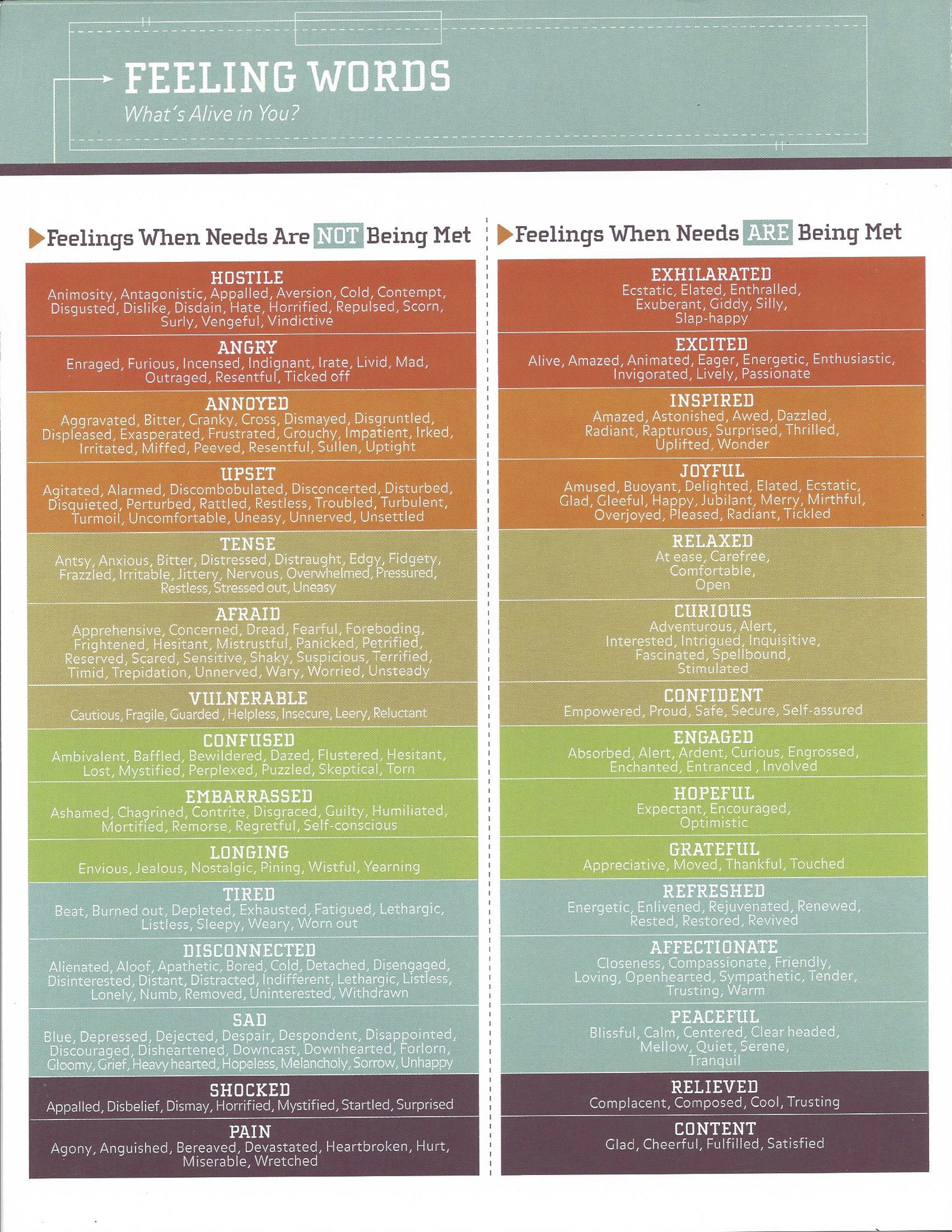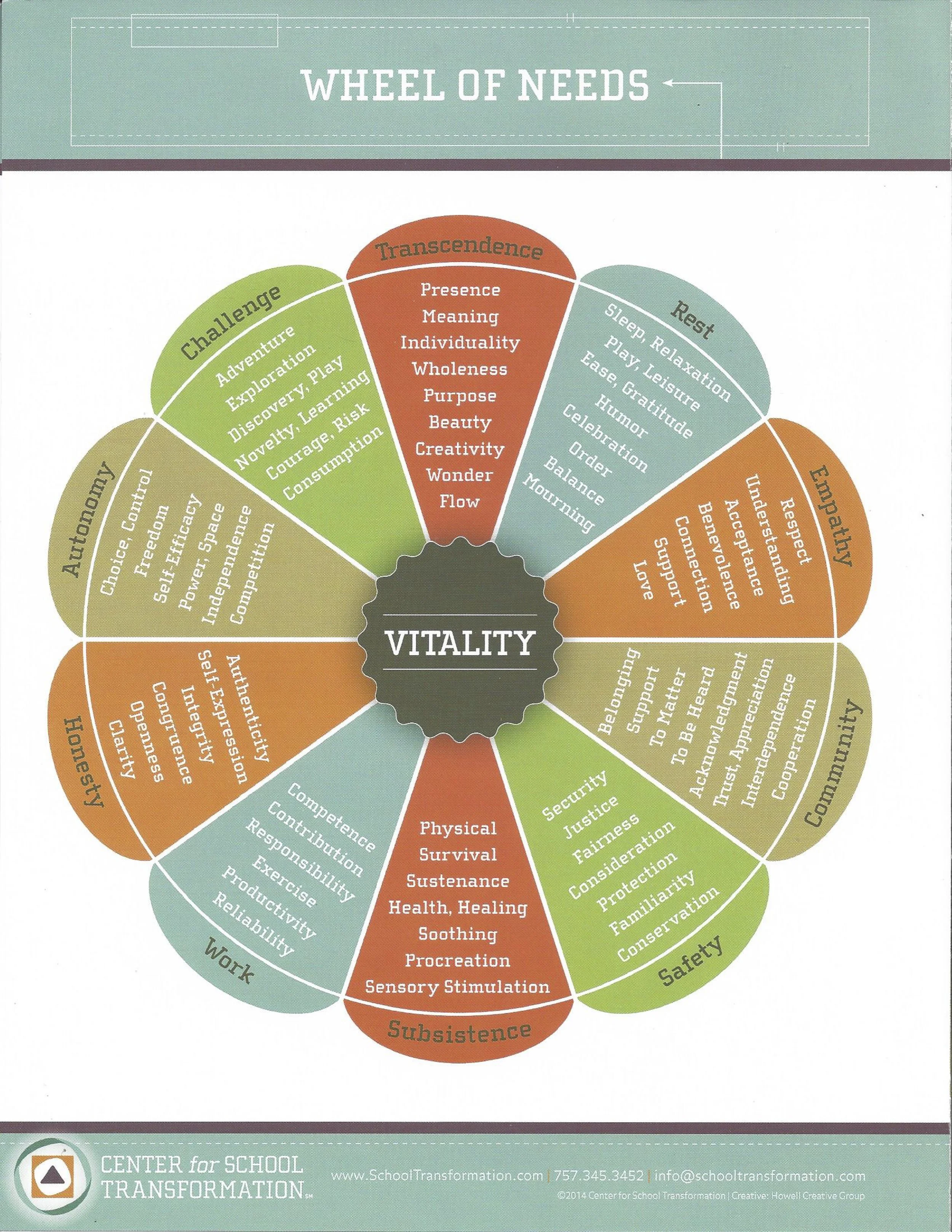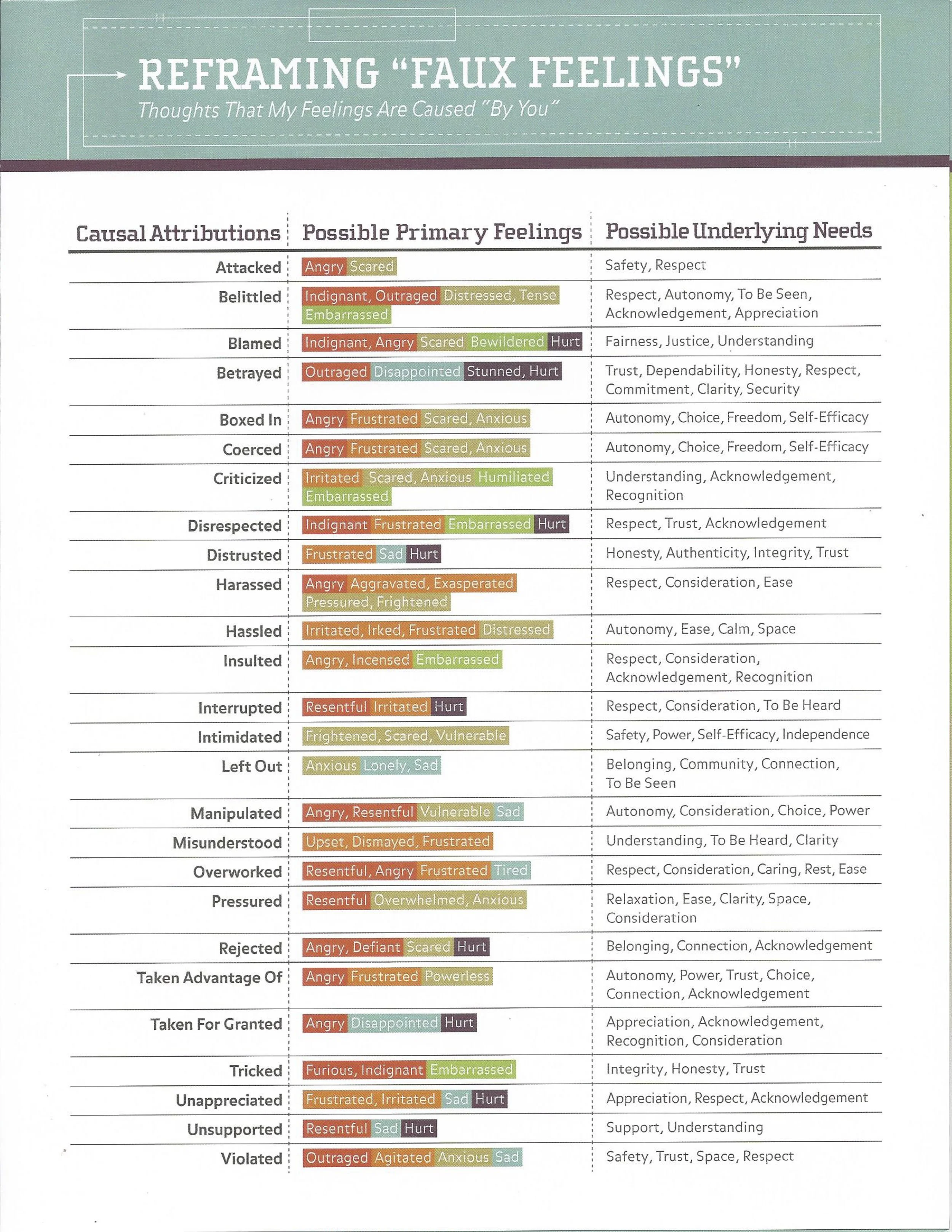Faux Feelings vs Authentic Emotions
Feelings and feelings awareness are essential to NonViolent Communication.
Often we use “feeling” words that may point to a feeling and a need, but are more focused on a causal relationship or an interpretation of what someone else is doing “to me”.
For instance “I feel neglected” is mostly about what the other person is doing; such as not giving me attention or looking at me.
This could stimulate painful feelings if this is a person that you want to connect with, however this could also stimulate a feeling of relief if this “neglect” is from a person that you don’t want any attention from.
Here is a list of feeling words to help build your feelings vocabulary.
This Wheel of Needs helps you connect your feelings to your underlying needs.
Here is a list of “Faux Feelings” and possible primary feelings and underlying needs to help you translate them.
Faux Feelings are not “bad” or even unhelpful.
I like to think of them as signs pointing to an actual feeling or need.
If someone says, “I felt really attacked” instead of “correcting” them by saying, “That’s not a real feeling!”
It could be more helpful to say something like, “When you felt like you were being attacked, was that scary for you, or did that make you angry?”
By reading the “faux feelings” as signs, we can recognize that we’re getting closer to actual feelings and needs, but that we’re not quite there yet.
Once we discover and tap into the authentic feelings and needs that are alive in that moment, it can lead to a powerful connection and support the relationship in a way that “faux feelings” never can.
I hope that these tools are helpful for you to find more connection and meaning in your conversations and relationships.
Listen to an episode of Language of Life where Nate Guadagni and Misha Beverly discuss Faux Feelings vs Authentic Emotions
Thanks to the Center for School Transformation for providing these resources. https://schooltransformation.com/




